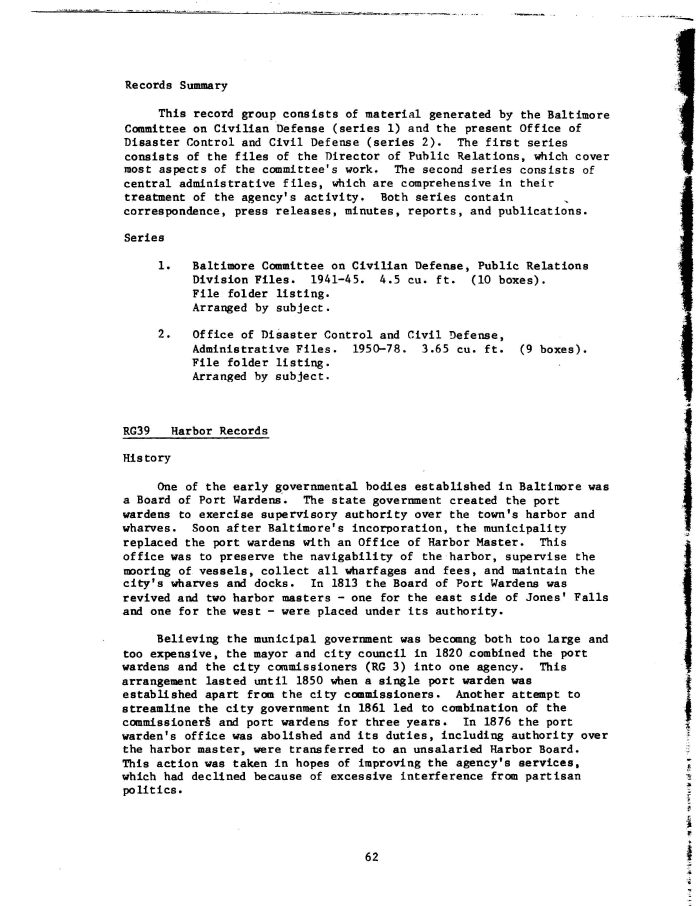|
This record group consists of material generated by the Baltimore
Committee on Civilian Defense (series 1) and the present Office of
Disaster Control and Civil Defense (series 2). The first series
consists of the files of the Director of Puhlic Relations, which cover
most aspects of the committee's work. The second series consists of
central administrative files, which are comprehensive in their
treatment of the agency's activity. Both series contain
correspondence, press releases, minutes, reports, and publications.
Series
1* Baltimore Committee on Civilian Defense, Public Relations
Division Files. 1941-45. 4.5 cu. ft. (10 boxes).
File folder listing.
Arranged by subject.
2. Office of Disaster Control and Civil Defense,
Administrative Files. 1950-78. 3.65 cu. ft. (9 boxes).
File folder listing.
Arranged by subject.
RG39 Harbor Records
History
One of the early governmental bodies established in Baltimore was
a Board of Port Wardens. The state government created the port
wardens to exercise supervisory authority over the town's harbor and
wharves. Soon after Baltimore's incorporation, the municipality
replaced the port wardens with an Office of Harbor Master. This
office was to preserve the navigability of the harbor, supervise the
mooring of vessels, collect all wharfages and fees, and maintain the
city's wharves and docks. In 1813 the Board of Port Wardens was
revived and two harbor masters - one for the east side of Jones' Falls
and one for the west - were placed under its authority.
Believing the municipal government was becomng both too large and
too expensive, the mayor and city council in 1820 combined the port
wardens and the city commissioners (RG 3) into one agency. This
arrangement lasted until 1850 when a single port warden was
established apart from the city commissioners. Another attempt to
streamline the city government in 1861 led to combination of the
commissioners and port wardens for three years. In 1876 the port
warden's office was abolished and its duties, including authority over
the harbor master, were transferred to an unsalaried Harbor Board.
This action was taken in hopes of improving the agency's services,
which had declined because of excessive interference from partisan
politics.
62
|

